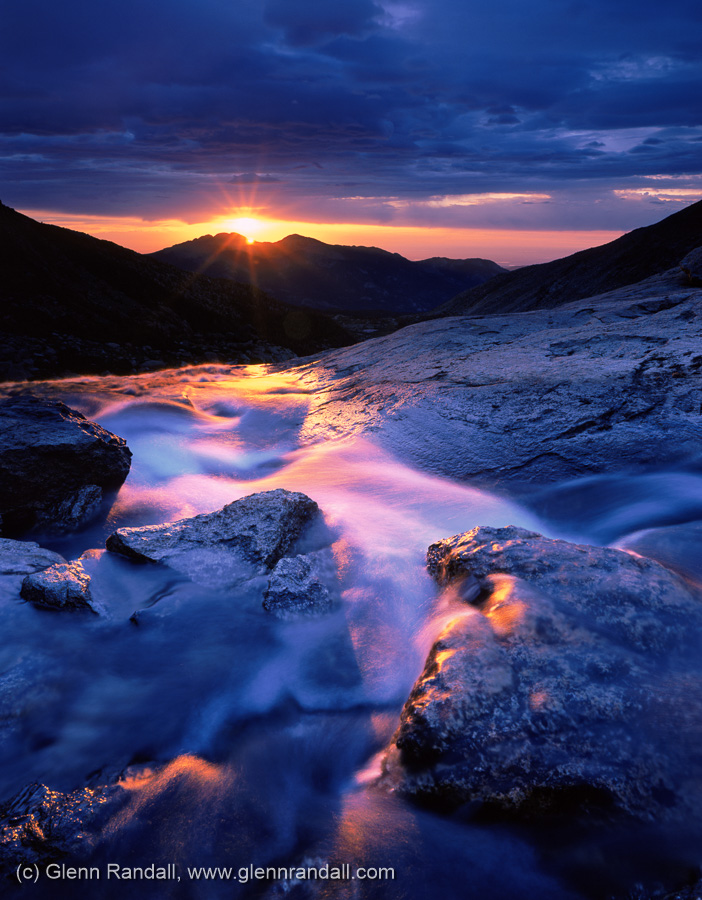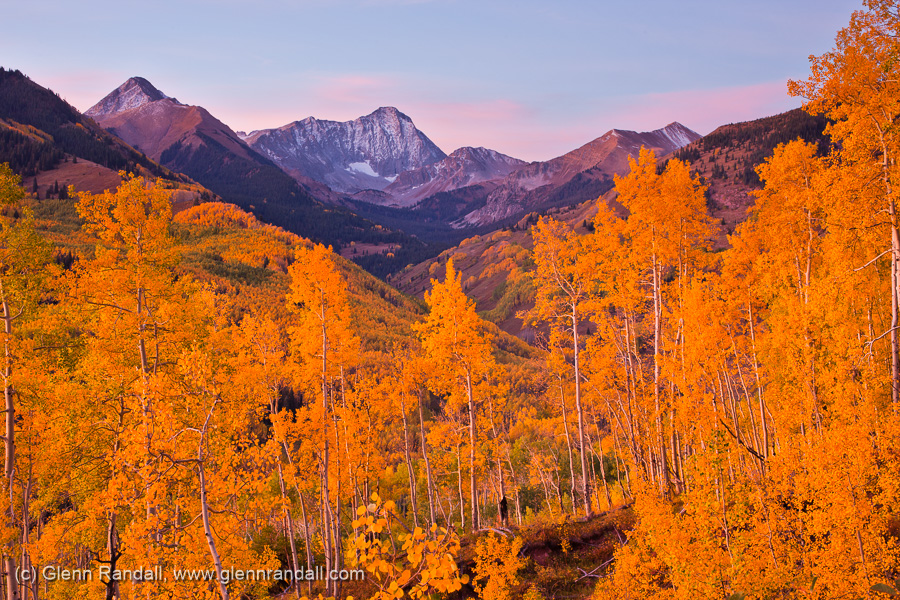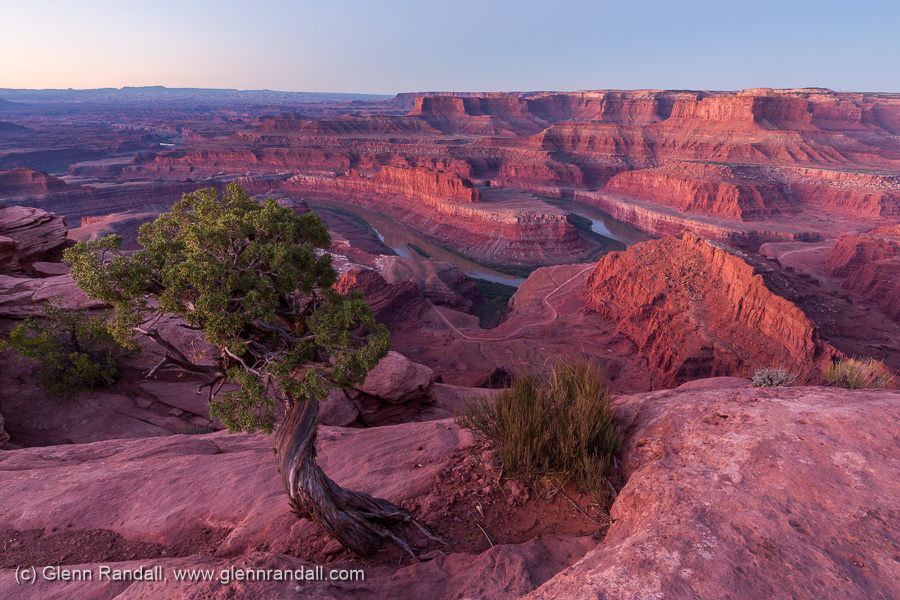Glenn Randall presents “Sunlight and Sky: Atmospheric Optics for Landscape Photographers” on Wednesday, January 22, 2020 at 7pm, Lone Tree Civic Center.
Arrive 30 minutes early for social time, to visit with your fellow club members and meet some new folks. The program is 7pm – 9pm.

Sunrise at Columbine Falls, Rocky Mountain National Park, Colorado
Glenn writes, “All of us tend to be blind to phenomena that we don’t understand or don’t even know exist. The more deeply I understand the science of light in the sky, the more clearly I see the sky’s awesome beauty – and the better the images I produce of its grandeur.” His talk will cover the following topics:
- Why, on a clear day, the sky looks blue, even though there’s nothing “blue” in a blue sky.
- Why clouds at midday look white, even though clouds are made of transparent water droplets.
- Why we sometimes see red clouds and mountains at sunrise and sunset, but we never see red clouds at midday.
- Why gap light, in which the sun finds a gap between dense clouds and the horizon, can be so much more colorful than sunrises and sunsets on a clear day.
- Why photographers might want to exclude glowing clouds at sunrise and sunset from their compositions.
- Why, on clear days, there can be two peaks in the warmth of the light around sunrise and sunset, with an interval in between when the light is bluish-white.
- Why 20 minutes before sunrise or after sunset (but not five) can be the best time to photograph deep canyons.
- Why big volcanic eruptions sometimes enhance twilight glows well before sunrise and after sunset but dull the color of the light at the exact moment of sunrise and sunset.
- Why you should never use a polarizer when photographing a rainbow with a wide-angle lens.
- The science of atmospheric optics explains all of these apparent paradoxes. Photographers will be able to use the information Glenn presents to better predict, find, and capture the extraordinary light that turns mundane landscape images into great ones.
About Glenn Randall:
Glenn Randall has been a full-time photographer, writer, and instructor for 41 years. Over 1,800 of his photographs have been published, including 83 covers, and he’s sold over 10,000 prints. Rocky Nook published his book The Art, Science, and Craft of Great Landscape Photography in spring 2015 and will publish the second edition in the spring of 2020. It published his book Dusk to Dawn: a Guide to Landscape Photography at Night in spring 2018. Farcountry Press published three books of his landscape photographs: Rocky Mountain National Park Impressions, Colorado Wild & Beautiful, and Sunrise from the Summit: First Light on Colorado’s Fourteeners. Glenn has had 23 feature articles published in Outdoor Photographer, where he is a contributing editor.

Twilight glow over Capitol Peak from the Ditch Trail, Maroon Bells-Snowmass Wilderness, Colorado

Sunrise at Dead Horse Point, Dead Horse Point State Park, Utah

